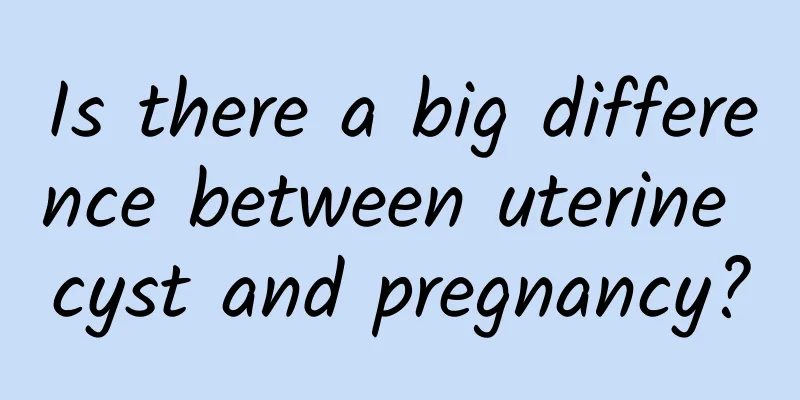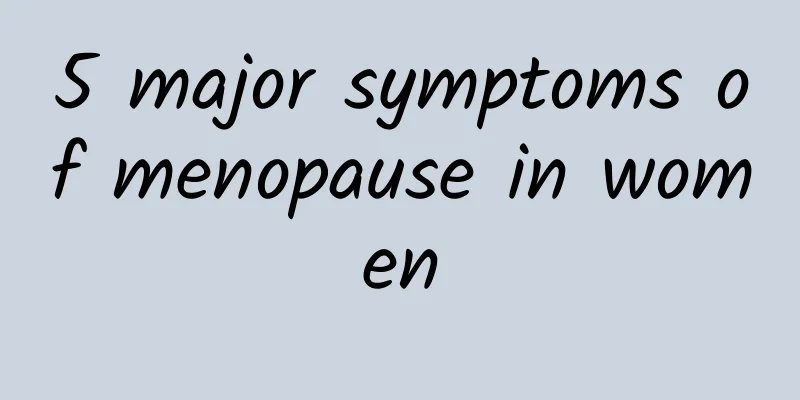Is there a big difference between uterine cyst and pregnancy?

|
Uterine cysts are essentially different from pregnancy, mainly in their pathological causes and physiological manifestations. Uterine cysts are a gynecological disease and an abnormal pathological state, while pregnancy is a normal physiological process. The two are also completely different in symptoms, diagnostic methods, and treatment methods, and targeted measures need to be taken according to the specific situation. 1 Differences in etiology Uterine cysts refer to the presence of liquid or semi-liquid cystic structures in the uterus. The causes may include abnormal hormone levels, endometriosis, infection or inflammation. Pregnancy is the process of fetal development in the uterus after the embryo successfully implants, and the premise is that healthy eggs and sperm combine. This fundamental difference in causes also determines the completely different physiological phenomena of the two. 2 Symptom Differences Uterine cysts usually cause symptoms such as pelvic pain, irregular menstruation, and infertility, but there may be no obvious discomfort in the early stages. Pregnancy is accompanied by normal physiological changes such as amenorrhea, breast tenderness, and early pregnancy reactions such as nausea and vomiting. If abnormalities are found through examination, larger cysts during pregnancy may also cause complications, so they need to be treated differently. 3. Diagnosis The judgment of the two mainly relies on medical imaging examinations. Ultrasound examination is the most common method. Pregnancy will show that the fetal sac or fetal bud has heart beats, while uterine cysts show smooth cyst walls and internal liquid structures. If the nature needs to be further clarified, MRI or blood tests such as CA125 tumor marker detection may be needed to diagnose uterine cysts. 4. Coping methods For uterine cysts, treatment measures are taken depending on their nature. Simple small cysts can be observed without immediate treatment; endometriosis cysts may require medication such as hormone regulation clomiphene, or surgical removal such as laparoscopic surgery. Regular prenatal checkups are required during pregnancy. If abnormalities are found, communicate with the doctor whether intervention is needed, such as pregnancy preservation, nutritional supplements, or special medical management. The two have essential functional differences, and timely judgment and personalized measures are needed. If you are unsure of your own situation, it is recommended to go to the hospital's obstetrics and gynecology department for professional examination, especially when you have abdominal pain, abnormal menstruation or amenorrhea, etc. Timely diagnosis can avoid delays in treatment or intervention. |
<<: Causes and hazards of cervical erosion
>>: What are the symptoms of functional uterine bleeding?
Recommend
Prevention of secondary amenorrhea
Prevention of secondary amenorrhea: 1. Adjust you...
Symptoms and causes of premature ovarian failure
The causes of premature ovarian failure involve m...
Dietary principles for bacterial vaginosis
Bacterial vaginitis is a type of vaginitis. Many ...
Experts explain several common ways of spreading adnexitis
In real life, there are many ways for adnexitis t...
Specific care methods for vulvar leukoplakia
Vulvar leukoplakia is a type of gynecological dis...
What are the dangers of having sex too early after abortion? How long after abortion can a woman have sex?
1. What are the dangers of having sex too early a...
Does having uterine fibroids cause abdominal pain?
Will I have lower abdominal pain if I have uterin...
How to treat dysmenorrhea and cold stomach
How to treat dysmenorrhea and cold stomach? Dysme...
Double the weight loss effect! Eat this way before and after exercise
[Key Points]: Exercising on an empty stomach does...
Nursing measures for patients with cervical erosion after microwave treatment
Microwave treatment of cervical erosion is a comm...
Will cervical erosion affect fertility? Analysis of the causes of infertility caused by cervical erosion
Many people may not know that cervical erosion wi...
Can I get pregnant if my cervix is enlarged and eroded?
Cervical hypertrophy and erosion may affect pregn...
What are the drugs for treating uterine fibroids?
Treatments for uterine fibroids include medicatio...
Patients with pelvic inflammatory disease can get healthy from eating
At present, pelvic inflammatory disease is a very...
Is endometrial tuberculosis contagious?
Is endometrial tuberculosis contagious? The answe...









